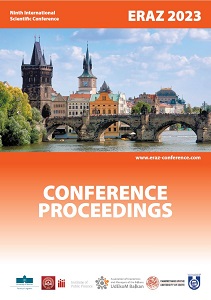Financial Market Knowledge of the Young Generation: An Empirical Analysis of European Students*
Financial Market Knowledge of the Young Generation: An Empirical Analysis of European Students*
Author(s): Dominika P. Galkiewicz, Mario Situm, Lukas Hartleif
Subject(s): Financial Markets, Socio-Economic Research
Published by: Udruženje ekonomista i menadžera Balkana
Keywords: Financial literacy; Literacy; Knowledge; Instruments; Financial markets; Survey
Summary/Abstract: In the recent survey of 262 European students, we try to assess the level of financial market knowledge of the young generation around the age of 23 years. We can identify the following highlights in the first out of three parts: 54.3% out of 256 people, who answered the question, purchased at least once shares, bonds, mutual funds or made comparable investments in the past and the experience made by 179 out of 262 (68.3%) people was perceived to be very positive. Similarly, the attitude of 230 out of 262 (87.8%) European students towards buying shares, bonds, mutual funds, or making comparable investments is very positive. However, the attitude of 247 and 249 people out of 262 attendees, respectively, towards the general economic situation driven by inflation and the observable increase in prices of everyday goods are rated rather low. In the main part of our survey, we analyze the level of competence of our European students to deal with calculus-related exercises (e.g. impact of the time value of money, interest or/and inflation, functioning of financial markets and instruments). We observe the following tendencies: 86.3% of people correctly stated that investments in shares offer the highest risk, which shows that European students understand the basic finance relationship between higher risk potentially leading to high returns or high losses. 82.8% of participants correctly stated that the possibility of losing money decreases with a higher degree of diversification. The third set of questions focuses on the knowledge related to investment possibilities and potential preferences for investments. For example, 45.4% of people signalized their willingness to invest their money into real estate investment funds, 43.9% chose shares, 28.2% mentioned ETFs, 20.2% would decide on bonds and 11.8% for cryptocurrencies. European students seem to be financially knowledgeable on an average level and the majority can choose instruments that fit their preferences.
Book: ERAZ 2023 / 9 - Knowledge-Based Sustainable Development - CONFERENCE PROCEEDINGS
- Page Range: 267-273
- Page Count: 8
- Publication Year: 2023
- Language: English
- Content File-PDF

